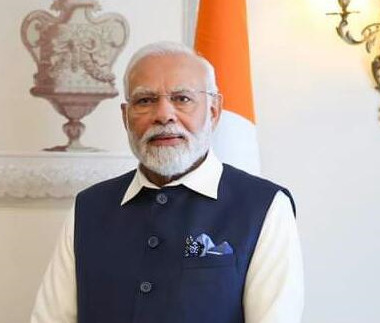
New Delhi, Delhi, 8th of April 2025 : A decade has elapsed since the launch of Pradhan Mantri Mudra Yojana (PMMY) by the Hon’ble Prime Minister on 08 April 2015. PMMY ensures collateral-free institutional credit up to Rs 20 lakh for the four categories of interventions namely, Shishu, Kishor, Tarun and now Tarun Plus, introduced in 2024-25, designed specifically for Tarun category, which have previously availed loans and proved their credit worthiness through sticking to repayment schedule.
To enhance the efficacy and effectiveness of this transformative scheme, GoI has taken a number of steps like (i) handholding support for facilitating submission of loan applications, (ii) online applications through PSBloansin59minutes and JanSamarth portal, and (iii) interest subvention of 2% on prompt repayment of Shishu loans. Since the inception of the scheme, it has been gaining huge traction, the progress quite stupendous while the impact is wide ranging.
Cumulatively (till Feb’2025), more than 52 crore PMMY accounts have been opened with a total credit disbursement of Rs 32.4 lakh crore, which is around 20% of the loans to MSMEs. In priority sector, MSME credit stands out to ~19.3% of SCBs adjusted net bank credit (ANBC) in FY24, compared to 15.8% in FY14.
Firstly, this credit dosage not only makes MSME units financially independent, but their size is also growing. A close analysis of data indicates that the share of Shishu in total PMMY accounts has declined from 93% in FY16 to 51.7% in FY25, while the Kishor share has increased to as much as 44.7% in FY25 from 5.9% in FY16. This clearly indicates that many Shishu accounts have grown and availed Kishor loans of higher loan limit and thus have transcended into larger MSME units. Average ticket size of the loans has nearly tripled; Rs 1.05 lakh in FY25 against Rs 39,000 in FY16.
Secondly, one of the silver linings of PMMY is the empowerment of women and Non-General social classes (SC/ST/OBC). Out of the 52 crore PMMY accounts, 50% belongs to SC/ST and OBC social class with 35% share in disbursed amount.
Thirdly, PMMY is changing social and financial conditions of women entrepreneurs as 68% of total PMMY accounts belong to women entrepreneurs. The state wise trend is also encouraging. Among states, Bihar has the largest number of PMMY women entrepreneurs (4.2 crore) followed by Tamil Nadu (4.0 crore) and West Bengal (3.7 crore) while Maharashtra has the largest share of women account holders (79%) in total accounts followed by Jharkhand (75%) and West Bengal (73%).
Fourthly, women-owned MSMEs constitute 20.5% of the total number of MSMEs registered on the Udyam portal since its inception on 1st July 2020. These women-owned MSMEs’ contribution to the employment generated by the total Udyam registered units is 18.7%. Tamil Nadu has highest employment generation (15.7%) in women-led MSMEs followed by Maharashtra (12.1%) , Karnataka and Uttar Pradesh (8%). Thus, financial inclusion programmes like PMMY are pivotal in empowering women-led MSMEs.
Fifthly, our research indicates that States which have higher share of disbursements to women have significantly shown higher employment in women led MSMEs. This reinforces the efficacy of targeted financial inclusion policies in fostering economic empowerment and labour market participation.
Sixthly, based on a composite Financial Inclusion Index— comprising of equally weighted indicators balancing Financial Access (captured through number of bank accounts opened and RuPay cards issued), Usage (captured through balance in beneficiary accounts) and Empowerment (women-owned MSMEs) —we explored how targeted Mudra disbursements affect states at different inclusion levels. The analysis reveals that states with lower financial inclusion levels benefit more significantly from funds directed toward minority and women entrepreneurs, highlighting the scheme’s positive impact in underserved areas.
Seventhly, the spatial dispersion analysis shows that in the last 10-years, there is increased skewness in disbursement allocation to states. Importantly, this skewness signals a strategic shift: the share of funds allocated to developed regions has fallen, while the share of underdeveloped regions—such as Bihar, Uttar Pradesh, Odisha, and the North-East—have gained.
All these findings together collectively suggest that the MUDRA loans are not only improving financial inclusion but is also recalibrating its focus to reach economically weaker states. This dual evidence underscores the scheme’s evolving strategy to promote inclusive growth by ensuring that financial resources are channeled toward areas with the greatest need.
Going forward, we expect ‘digital first’ approach of NBFCs, e.g., utilization of account aggregator framework, will help further in flow of credit to MSMEs. This is expected to get a boost from the proposed unified lending interface (ULI) initiative of the RBI. In the pilot of ULI, the average ticket size of loans disbursed to MSME is Rs 9 lakh, so this will significantly reduce turn-around-time further in a cost-effective manner.










More Stories
Union Minister Of Jal Shakti, Shri C.R. Patil Reviews The Jalaj Initiative And Charts A New Path For River Conservation And Livelihood Generation.
Toyota Kirloskar Motor Reaffirms Long-Term Commitment To Road Safety Across India.
Captain Rahul Bali Curates First Ever Aizawl International Half Marathon In Mizoram.